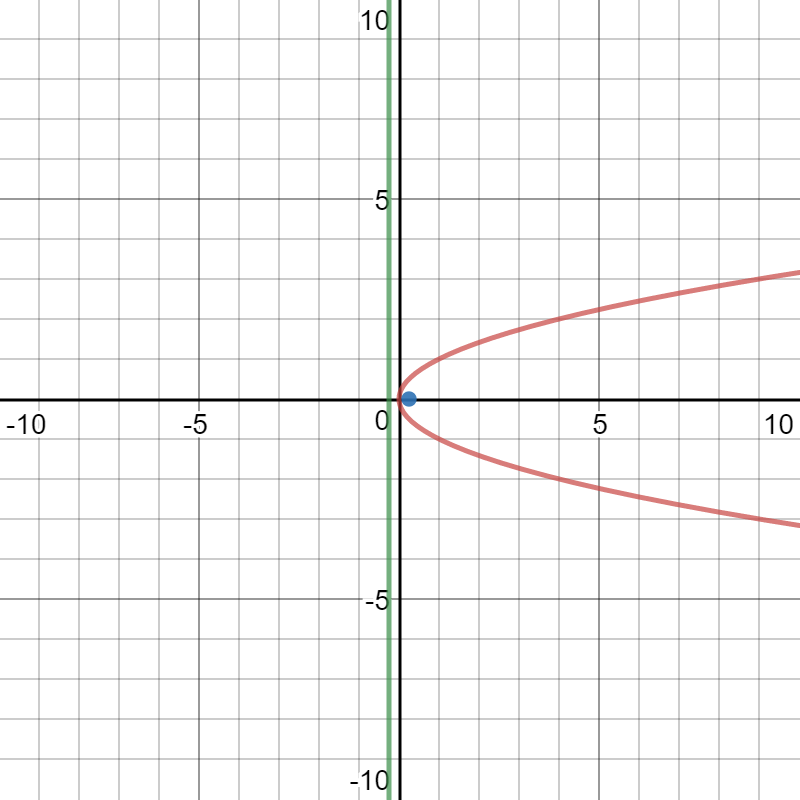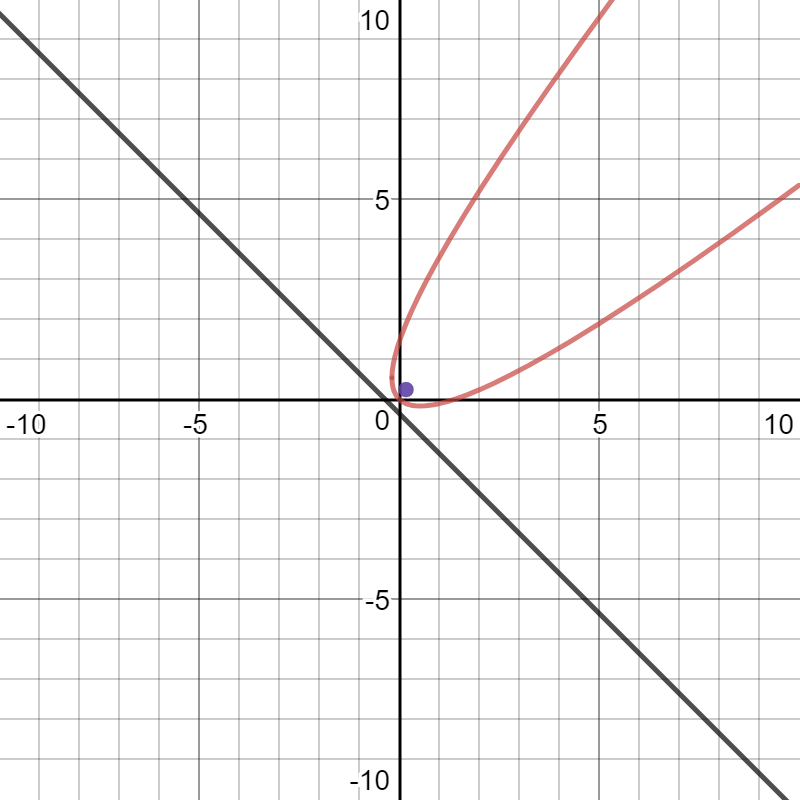Question #45399
1 Answer
Because the vertex is the origin and the rotation is centered about the origin, the vertex of the rotated parabola is the origin. The explanation gives much greater detail.
Explanation:
Please read this reference regarding the Rotation of Axes of conic sections.
The given equation
Written in the General Cartesian form
#Ax^2+Bxy+Cy^2+Dx+Ey + F = 0
Is:
Please observe that
Use equations 9.4.4a through 9.4.4f to compute the new values, A' through F' with
The rotated parabola is:
Return to the original parabola
The focal distance is
This makes the focus of the original parabola
The directrix of the original parabola is
The new focus will be
The angle that the original directrix forms with the x axis is
Use the distance from a point to a line:
Where the distance is
The positive value does not make sense:
Here is the original equation with is focus and directrix:

Here is the rotated equation with its focus and directrix:

Please observe that both of them have their vertex at the origin.
